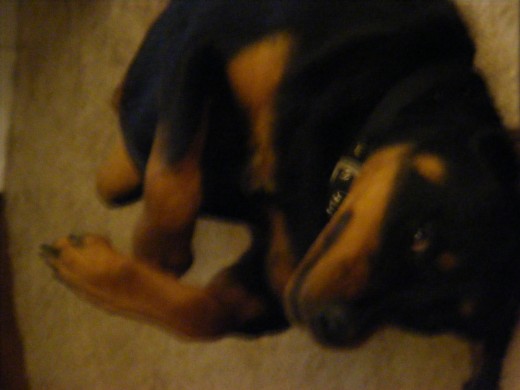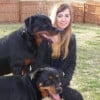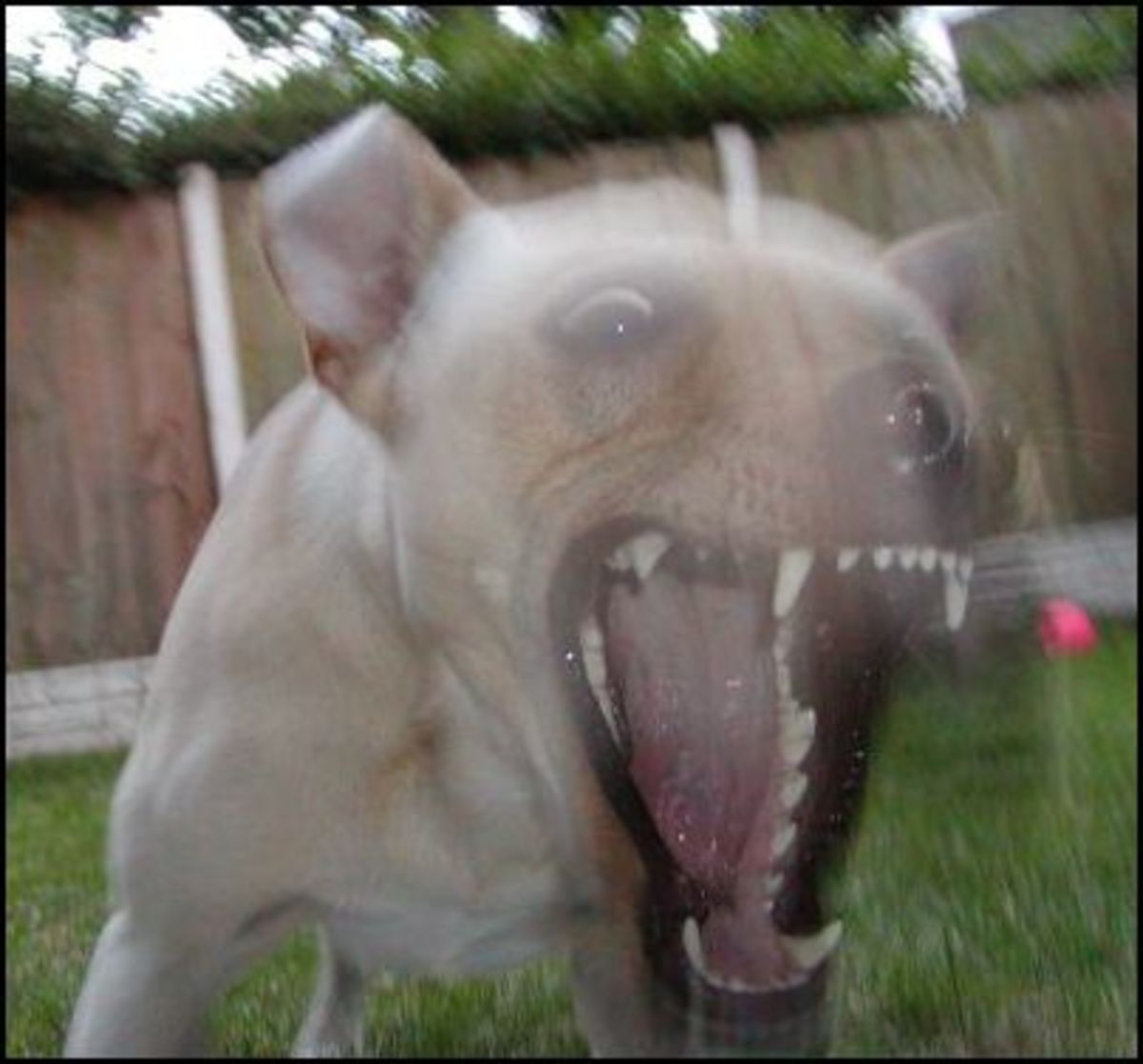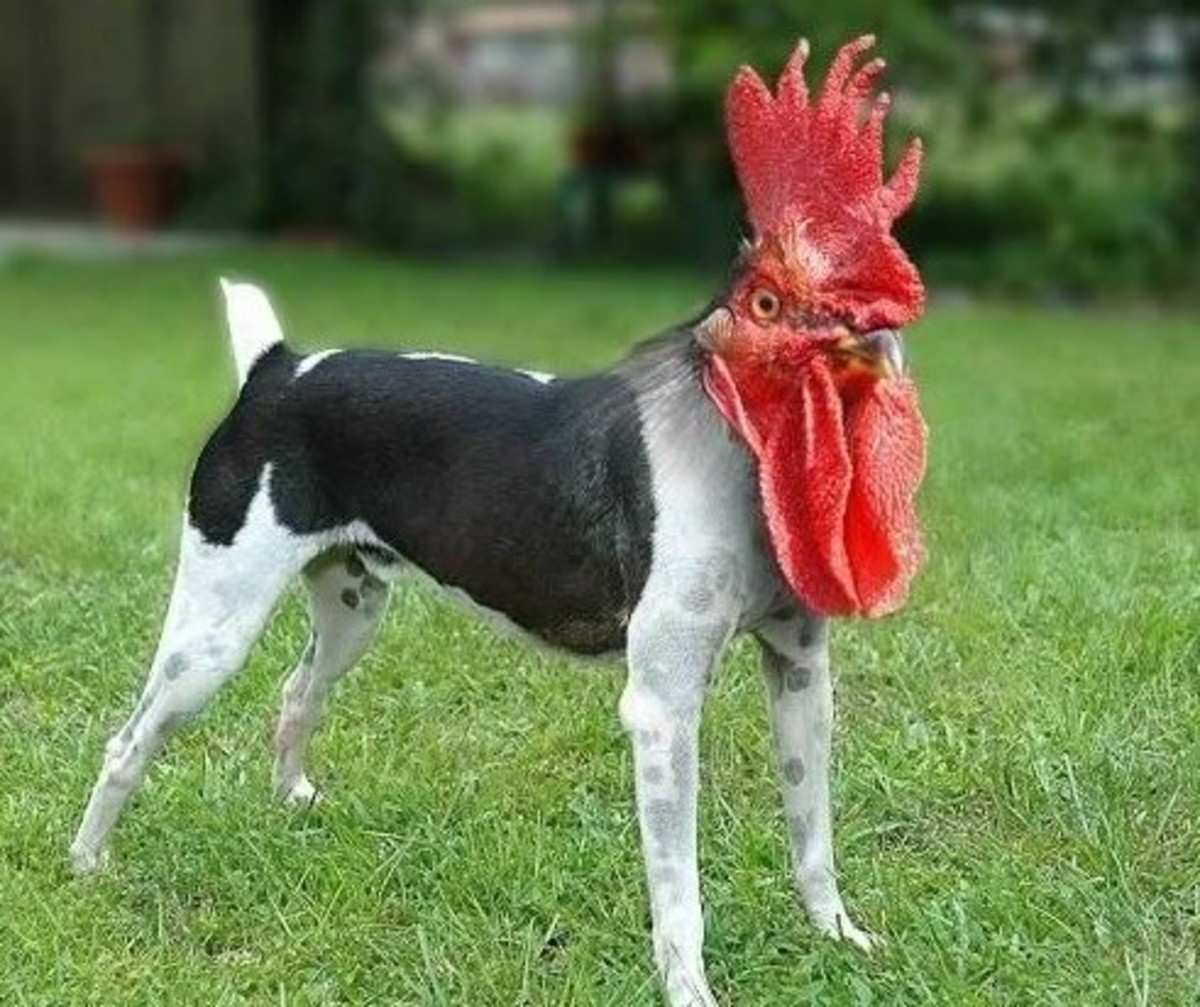Signs a Dog is About to Bite

According to CDC statistics is is estimated that an average of 4.5 million Americans are bitten by dogs each year with one in five dog bites requiring medical attention. With these statistics in mind, responsible dog owners should be on high alert and looking for strategies for preventing dog bites from occurring in the first place. Perhaps one of the biggest roles in bite prevention is recognizing the cues signs that a dog is about to bite.
Dogs communicate a great deal with their body and if only owners knew how to read their dog's body language, perhaps there would be a less amount of dog bites. One important consideration to keep in mind is that any dog can bite. It is unfair to point the finger out towards specific breeds when any dog given the right circumstances may resort to their instinctive defense mechanisms.
Many times dog behaviorists hear from dog owners the following sentence: ''My dog bit out of nowhere"' or ''My dog bites with nowarning''. Truth is, most of the time there are subtle warnings that owners are not capable of recognizing. Yet, dogs among each other are strongly capable of recognizing such cues and therefore quickly learn to stay away from dogs presenting them. Dogs tend to communicate with their ears, eyes, mouth, head, paws, tail, hair and posture
The most common dog bites occur out of fear. However, there are also dog bites deriving from other dynamics such as redirected aggression, maternal aggression or pain. Knowing the circumstances that may trigger a bite is also a great way to prevent dog bites from occurring in the first place.
Common circumstances that may elicit a dog bite are the following: bothering the dog while sleeping, taking away toys and bones from the dog's mouth, pestering a dog while eating, getting into a dog's face, bending over a dog, hugging a dog, cornering a dog for punishment, treating a dog in pain, separating two dogs that are fighting, touching a new mother dog's puppies, approaching a stray dog, invading a dog's territory, running away from a dog, allowing children to play rough with dogs, working up a dog too much in rough play and physically punishing a dog.
Behavior Modification Manuals for Aggressive Dogs
Following are some typical signs indicating nervousness and stress which may be the emotions present right before a dog resorts to biting. Of utmost importance is to recognize that not all dogs are created equal and therefore, each dog may show their negative feelings in a different manner. Owners of biting dogs should consult with a qualified dog behaviorist.
Signs a Dog is Uncomfortable
Recognizing signs a dog is uncomfortable and perhaps, ''has had enough'' may help owners understand their dog better and perhaps prevent any future biting.
- Licking lips
Dogs often lick their lips in anticipation when they see a treat. This occurs, because just as in humans, their mouth waters and they may be subject to drooling. They therefore deal with this increased salivation, by licking their lips. However, dogs may also lick their lips when they are uncomfortable, as a sign of appeasement, therefore, seeing a dog licking its lips may be a warning sign that what you are doing should be stopped. One consideration: some dogs lick their lips repeatedly when they are nauseous.
- Yawning
When dogs are stressed, they often attempt to release their anxiety by yawning. While yawning may take place normally at home when a dog awakens from a nap or is sleepy, in certain circumstances, it means the dog is nervous about something or anxious. Often, dogs may yawn a great deal before heading to the vet's office or when dealing with a child that is bothering them.
- Averted Gaze
Some dogs may look away for a few seconds, stiffen, freeze and then suddenly strike. Often this bite is one that was not expected, but if dog owners know how to recognize the averted gaze, they could have anticipated the bite.
- Half Moon Eyes
There are times when a dog's white of its eye may be quite visible showing up as a half moon. When a dog displays such eyes and appears worried it is best to leave him alone and stop what is being done.
- Raised Hackles
A dog's hackles consists of the fur that goes from the neck to the tail. This fur is capable of ''piloerection'' which means it can raise up when the dog is scared or aggressive. A dog in this state of mind, should not be approached.
- Tail Wag
Tail wagging as often been construed as friendliness but it is not always the case. A dog wagging its tail high and nervously may be a dominant dog with not so good intentions, whereas a dog with a tail wagging low may be unsure or insecure.
- Displaced Behaviors
At times, when dogs are uncomfortable they may engage in activities that seem to have nothing to do with their source of conflict. Therefore, dogs may start sniffing the ground as a sign of appeasement or licking their fur. Some may lift a paw, or scratch themselves.
Signs a Dog May be Ready to Bite
Most dog owners are able to recognize obvious signs of nervousness, but it is unfortunate that they were not able to intervene before pushing the dog to this point. Most likely these results derive from ignoring the fact that the dog was already uncomfortable with a situation.The most obvious signs are as follows:
- Growling
- Snarling
- Showing Teeth
- Snapping
- Lunging
- And of course, biting
One particular feature of dogs getting ready to bite, is a mouth closed tight and the dog's body getting very stiff and motionless for a few seconds. This is often not recognized by inexperienced dog owners that are not much savvy about dog body language.
One tip worth mentioning is that dogs should not be disciplined for growling. Growling is an effective way for dogs to communicate displeasure, and if a dog is punished for growling it will learn to give up this important warning signal and upgrade to a bite with no warning. A growl after all, is a dog's way of saying ''enough'' and owners should evaluate what has bought the dog to this point. Read: Why Growling Should Never be Suppressed in dogs
Of course, a dog exhibiting aggressive behaviors should be evaluated by a dog behaviorist so the right dynamics can be assessed. Different forms of aggression require different approaches, so it is best to allow the experts to evaluate each case and offer the most appropriate solutions.
For further reading
- Dog Behavior: The Body Language of Stress and Fear
What signs suggest you own a fearful dog? How can you tell if your dog is getting uncomfortable and a bit stressed? Knowing these subtle, and less subtle signs will make you a more knowledgeable owner and prevent you from putting your dog in situatio - Dog Behavior: Understanding Dog Calming Signals
What are calming signals in dogs and when are they displayed? Crack the code to understanding and speaking - Dog Behavior: How to Stop a Dog From Acting Protecti...
Is your dog barking at every single stranger walking by your dog when inside the car? Learn effective strategies to reduce this annoying behavior. - Dog Dominance: Myth or Truth?
Dominance is often a misunderstood, yet, overused word. It is just too easy to watch a dog and label it as ''dominant'' upon observing its behavior. It is almost as if a dog can be either ''dominant'' or ''submissive'' with no shades in between.... - Dog Behavior: Signs a Dog is not Enjoying Petting an...
What are some signs a dog is about to bite? Learn how to avoid putting yourself at risk, when dogs should not be pet and the warning signs of an impending dog bite.




